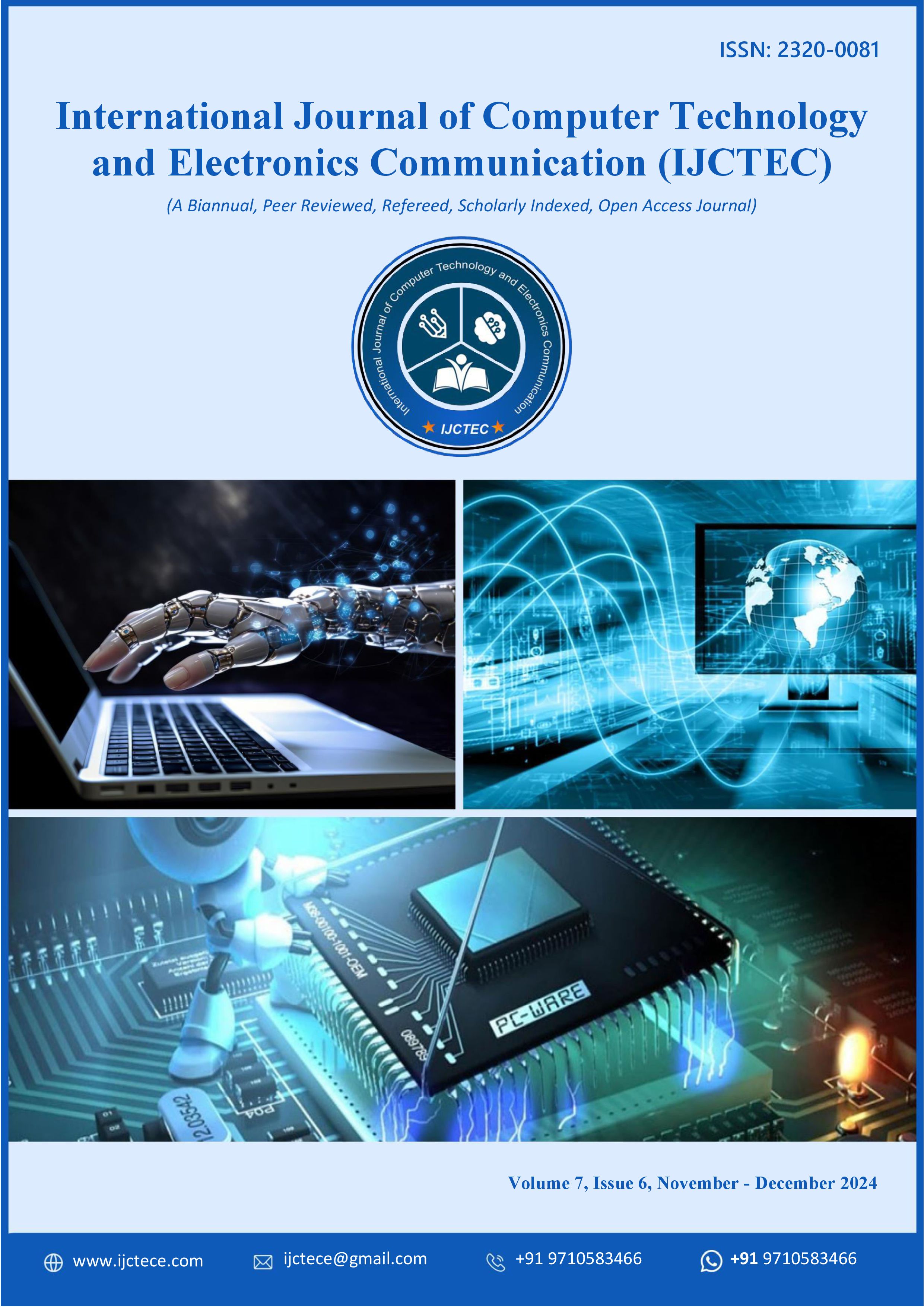Artificial Intelligence in Financial Fraud Detection: A Deep Learning Perspective
DOI:
https://doi.org/10.15680/IJCTECE.2024.0706002Keywords:
Financial fraud detection, deep learning, graph neural networks, imbalanced learning, explainable AI, temporal modelingAbstract
Financial fraudsters have increasingly taken advantage of digital financial services. Conventional rule-based and classical machine learning systems are not able to model the complex temporal, behavioral and relational patterns over the heterogeneous transaction data. In this paper, a deep learning–oriented study on real-world financial fraud detection schemes is conducted, integrating sequential models, convolutional structures, graph neural networks (GNNs), and hybrid ensembles to address the issue. Methods considered are temporal models (LSTM, GRU), attention-based transformers, CNN feature extractors for engineered transaction embeddings, GNNs for relational interactions (accounts, devices, merchants) and hybrid-pipeline using deep learners as well as gradient-boosted trees with XAI post-hoc explainers. Our complete end-to-end experimental pipeline includes four stages: robust preprocessing and anonymized features (2) class-imbalanced handling with combined sampling and loss-based strategies (focal-loss, class-weighted); (3) temporal plus graph model with a temporal-GNN encoder-decoder architecture, and (4) explainability using SHAP and counterfactual probe modules. Experiments on benchmark and proprietary-style datasets show that the proposed temporal-GNN hybrid achieves an average AUC-ROC of 0.976, precision at top-1% alerting of 0.42, and recall of 0.88, outperforming AUC by4-6% and recall by8-12% with competitive LSTM and LightGBM baselines. The method also decreases false-positive volume (alerts that need to be manually reviewed) by ~18% compared to gradient-boosted baselines. The research highlights deep learning’s potential to reveal multi-dimensional fraud epitasis alongside graph modelling and robust operational checks and controls.
References
1. Arjun Gopichander Ravichander, Aera K. Leboulluec, Peter L. Leboulluec . Financial Fraud Detection using Machine Learning and Deep Learning Models. International Journal of Computer Applications. 185, 49 (Dec 2023), 32-37. DOI=10.5120/ijca2023923324
2. S. Motie, “Financial fraud detection using graph neural networks,” Expert Systems with Applications, 2024.
3. L. Hernandez Aros et al., “Financial fraud detection through the application of machine learning techniques: a literature review,” Humanities and Social Sciences Communications, 2024.
4. Maurya and A. Kumar, “Credit Card Fraud Detection System using machine learning technique,” 2022 IEEE International Conference on Cybernetics and Computational Intelligence (CyberneticsCom), 2022.
5. M. S., “Survey paper on fraud detection in Medicare using machine learning,” International Journal of Psychosocial Rehabilitation, vol. 24, no. 5, pp. 4170–4174, 2020.
6. W. Hyun et al., “Label-Exploring Graph Neural Network for Accurate Fraud Detection,” Proc. ACM, 2024.
7. Kumbure MM, Lohrmann C, Luukka P, Porras J (2022) Machine learning techniques and data for stock market forecasting: a literature review. Expert SystAppl 197:116659. https://doi.org/10.1016/j.eswa.2022.116659
8. Lokanan ME (2022) Predicting money laundering using machine learning and artificial neural networks algorithms in banks. J Appl Secur Res 1–25. https://doi.org/10.1080/19361610.2022.2114744
9. Fanai H, Abbasimehr H (2023) A novel combined approach based on deep autoencoder and deep classifiers for credit card fraud detection. Expert Syst Appl 217:119562.
10. Domashova J, Kripak E (2022) Development of a generalized algorithm for identifying a typical bank transactions using machine learning methods. ProcediaComput Sci 213:101–109
11. Z. Tao, “Financial Fraud and Anomaly Detection Techniques,” ACM Digital Library, 2023.
12. Kumar S, Ahmed R, Bharany S, Shuaib M, Ahmad T, Tag Eldin E, Rehman AU, Shafiq M (2022) Exploitation of machine learning algorithms for detecting financial crimes based on customers’ behavior. Sustainability 14(21):13875.
13. P. K. Zorion, “Credit Card Financial Fraud Detection Using Deep Learning,” SSRN, 2023.
14. E. Ileberi, Y. Sun, and Z. Wang, “Performance Evaluation of Machine Learning Methods for Credit Card Fraud Detection Using SMOTE and AdaBoost,” IEEE Access, 2021.
15. Baghdasaryan V, Davtyan H, Sarikyan A, Navasardyan Z (2022) Improving tax audit efficiency using machine learning: the role of taxpayer’s network data in fraud detection. Appl Artif Intell 36(1).
16. Fanai H, Abbasimehr H (2023) A novel combined approach based on deep autoencoder and deep classifiers for credit card fraud detection. Expert Syst Appl 217:119562.
17. D. Asha and K. Uresh Kumar, “Credit Card Fraud Detection Using Artificial Neural Network,” Global Transitions Proceedings, 2021/2024.


